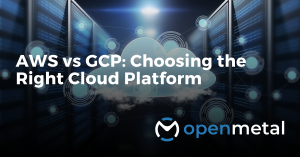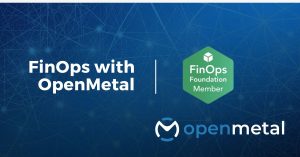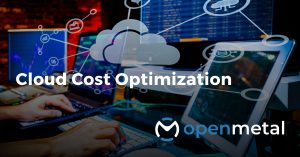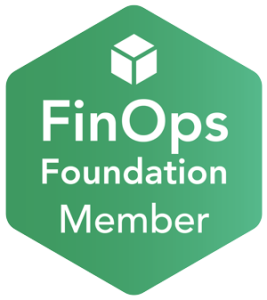FinOps is a cultural shift that encourages collaboration between internal operational teams to optimize the costs of cloud services. This allows the efficient use of cloud resources to maximize the value delivered to an organization’s customers. In a typical scenario, cloud costs start out as straight forward and well defined. However, as workloads grow and additional variable costs come into the mix, understanding the cloud invoice can become rather challenging. FinOps serves as the guide assisting organizations to navigate the financial intricacies of their cloud usage by providing the framework for interdepartmental collaboration.
What Are The Key Components Of FinOps?
 Visibility and Transparency: FinOps emphasizes the importance of transparency of cloud expenses with real-time insights and detailed breakdown of costs. Real-time data helps organizations monitor cloud costs and avoid run away bills caused by resources accidentally left on when they’re not in use.
Visibility and Transparency: FinOps emphasizes the importance of transparency of cloud expenses with real-time insights and detailed breakdown of costs. Real-time data helps organizations monitor cloud costs and avoid run away bills caused by resources accidentally left on when they’re not in use. - Accountability and Responsibility: With a well defined FinOps strategy, there’s no more passing the blame between departments over who is responsible for excessive cloud spend. With an effective FinOps strategy, all departments that have the power to affect the organization’s cloud spend understand the costs attached to that spend. With this information they are then able to make an informed decision on if it fits within their budget or if the projected ROI is worth the cloud spend.
- Optimization: FinOps allows organizations to continuously find ways to maximize cloud resources while reducing cloud spend. For example, this may involve evaluating on-demand resources and, if appropriate, switching to a committed term contract to realize a more efficient cloud spend.
- Governance: With the implementation of a FinOps strategy, policies are established within the organization to manage cloud costs, security and compliance. This will allow the identification of which department is responsible for incurring which costs and who is responsible for making decisions that can affect the organization’s cloud expenses.
Where Do Private Clouds Fit In The FinOps Landscape?
Private clouds play a key role in reducing the costs of on-demand resources and identifying the most economical terms contract solution for fluctuating resource requirements. By combining various on-demand VM needs and replacing those public cloud VMs with VMs on your own hosted private cloud, your organization may be able to reduce resource cost by over 50% while increasing cloud performance.
For illustration purposes, I compared the expenses of a public cloud configuration to a private cloud configuration. Here is what I found.
Using a Google Cloud Platform (“GCP”) service offering of 593 E2 Medium VMs with 36,000 GiB of Egress with persistent disk, Zonal SSD PD 40 GiB hosted in a North Virginia data center, the on-demand price is $23,316 per month. If you switched to a one year contract with GCP, your monthly bill is reduced to $17,355 and provides you with a monthly savings of $5,961, or roughly 25%.
However, if you consolidate those 593 VMs on a hosted private cloud, for example on OpenMetal’s XL cloud offering, same size, egress and storage resources, the on-demand price is $6,105 per month, or $5,373 per month with a one year contract.
In summary, this may be a bit shocking, but comparing the on-demand price for similar resources on a hosted private cloud vs public cloud you will see a saving of 73%, or $17,211 per month. On a one-year term agreement, the monthly savings increase to 76% or $17,943.
Advantages Of Private Clouds For FinOps
If the dramatic savings isn’t enough to convince you to seriously consider utilizing private clouds as part of your cloud cost optimization strategy, a deeper understanding of the additional advantages of choosing hosted private cloud over public clouds will make it that much harder to ignore this alternative solution
Cost Control and Visibility
With a private cloud, there are fewer variable costs. Because you pay for the entire block of resources, the bulk of your monthly resource bill is fixed. You will not be billed extra for accidentally leaving idle resources or forgetting to turn off a VM. You will still need to monitor some variable costs such as bandwidth (just as you would have to on a public cloud) but often with private clouds, there is some bandwidth allowance. In addition, lower bandwidth costs are commonly negotiated in all term agreements. To limit unexpected bandwidth usage and expense, many tools are available that monitor bandwidth usage and issue alerts if bandwidth usage exceeds a predetermined level.
Security and Compliance
With private clouds, the entire block of resources is allocated to your workloads. Most hosted private cloud providers, such as OpenMetal, grant customers root level access to their cloud. This enables organizations to make the necessary changes in order to secure and optimize the cloud to meet industry compliance requirements and remain compliant to specific industry regulations. Having root level access also allows for consistent optimization opportunities by having the ability to securely install software that is needed for the operation.
Performance and Customization
As mentioned above, root level access to your cloud environment allows your organization to tailor hardware configurations for your specific workloads and customize the cloud environment for your organization’s unique needs. This leads to improved overall performance.
How Do I Optimize Resource Usage Within A Private Cloud For Cost Efficiency?
Resource Optimization
It is common practice for developers or administrators to provision temporary servers to accommodate workloads. However, it is also common that these temporary servers, including associated storage, are not deprovision after the task is complete. Additionally, some VM instances may be larger than necessary to accommodate the anticipation of usage spikes. These idle or over-sized VMs consume resources that could be reallocated to other projects. By implementing techniques such as right-sizing, scheduling, and autoscaling, resource utilization can be optimized thereby reducing overall costs.
Cost Allocation and Chargeback
It can be tempting to utilize all resources you have at your disposal, after all you paid for it. However, without accountability and a clear cost ownership, resources can be left idle and seem unavailable when needed by other departments leading to additional resource purchases. To realize the full benefit of your cloud spend it is important for organizations to employ clear cost allocation models to accurately track and attribute costs to specific departments or projects. Additionally you may want to consider using chargeback models to encourage responsible resource usage and cost awareness.
Monitor Your Cloud Resource Usage
Monitoring cloud usage with cloud monitoring tools can help businesses optimize operational costs and ensure efficient resource utilization. Cloud monitoring tools provide real-time insights into various aspects of cloud performance, such as server load, network traffic, and storage usage. By analyzing these metrics, businesses can identify potential bottlenecks, forecast capacity needs, and pinpoint opportunities for optimization. Additionally, cloud monitoring tools facilitate the detection of any abnormal activities (that may result in unexpected billing or unauthorized spikes in bandwidth usage) or security threats, enhancing overall system integrity. With proactive monitoring, organizations can continuously review and optimize resource allocation based on their changing needs and usage patterns. Most providers have a dashboard in which you can monitor your cloud usage. For example, OpenMetal uses Datadog which allows users to oversee all layers of their deployments.
Wrapping Up
To summarize, incorporating private clouds into your organization’s FinOps strategy offers numerous strategic advantages, particularly in terms of cost optimization and resource management. In addition to cost control and visibility private clouds offer flexibility in resource allocation and customization which enables organizations to tailor hardware configurations for their specific workloads. Incorporating private clouds as part of your organization’s FinOps strategy will help achieve greater cost efficiency, performance optimization, and operational excellence in cloud environments. By embracing private clouds, organizations can effectively navigate the financial intricacies of cloud usage while maximizing value for their customers and stakeholders.
More on the OpenMetal Blog…

AWS vs GCP: Choosing The Right Cloud Platform
AWS and GCP are leading players in cloud computing, offering a wide range of services and attractive pricing. However, choosing the right platform requires under …Read More

OpenMetal is a proud member of the FinOps foundation. Learn more about our commitment to transparent pricing and explore our library of FinOps and cloud cost optimization resources…Learn More

Cloud cost optimization is the practice of efficiently managing the cost of your business’ cloud computing resources. An effective cloud cost optimization strategy ensures that your .. Read More
Test Drive
For eligible organizations, individuals, and Open Source Partners, Private Cloud Cores are free to trial. Apply today to qualify.
Subscribe
Join our community! Subscribe to our newsletter to get the latest company news, product releases, updates from partners, and more.




































 Visibility and Transparency
Visibility and Transparency